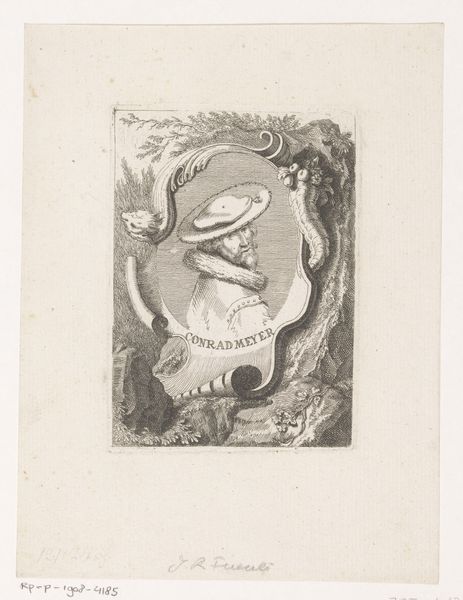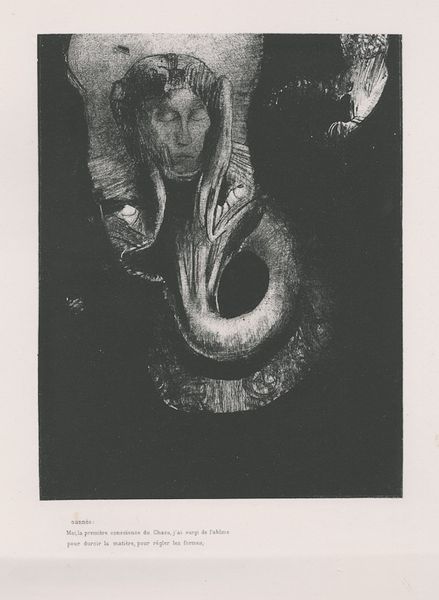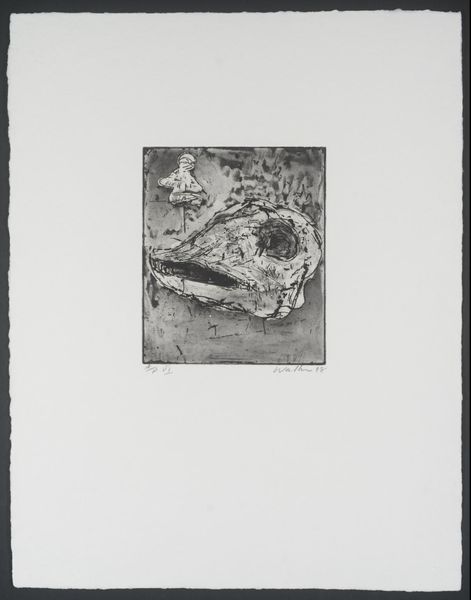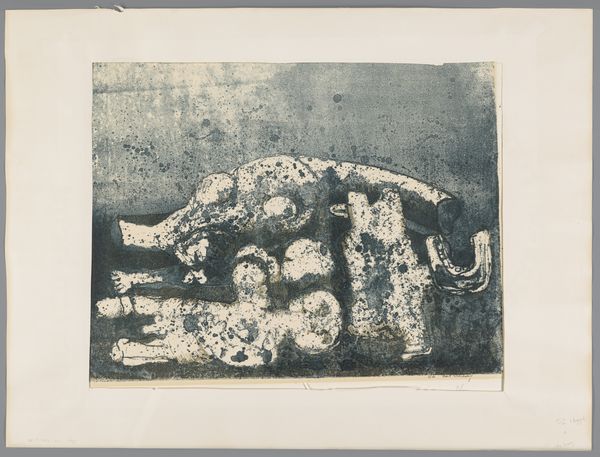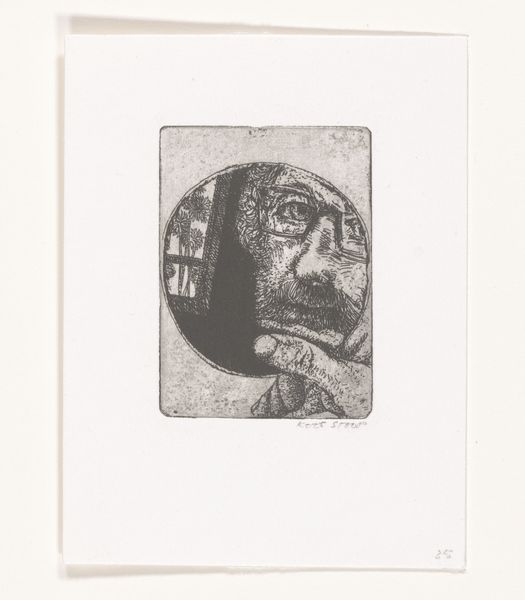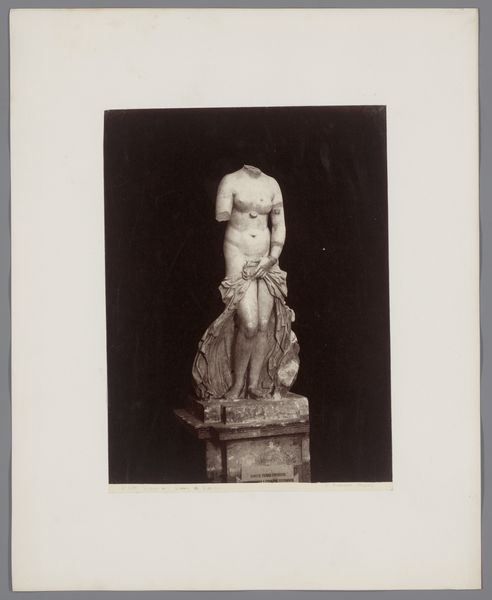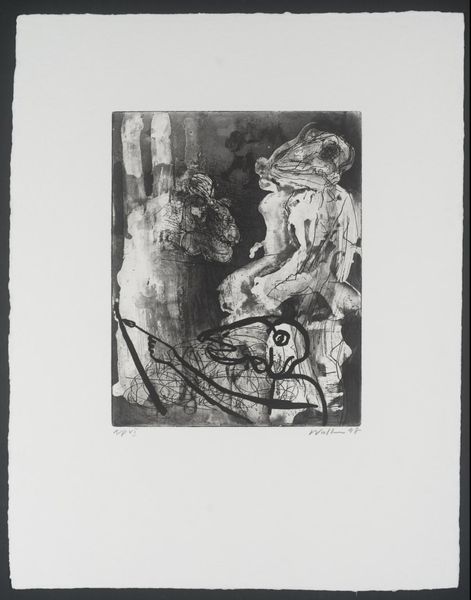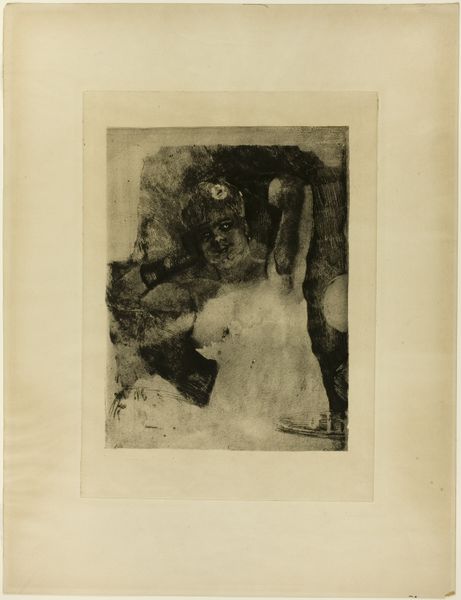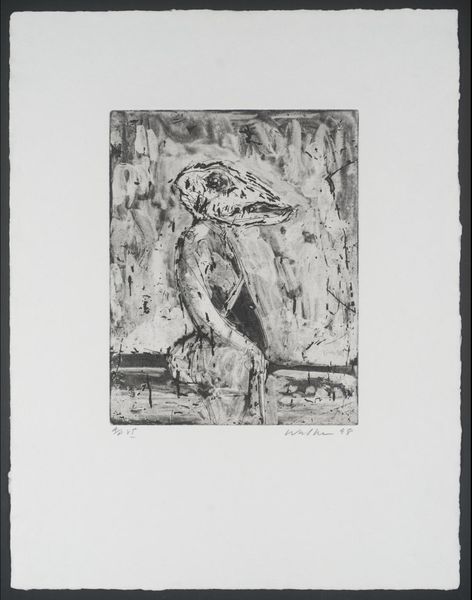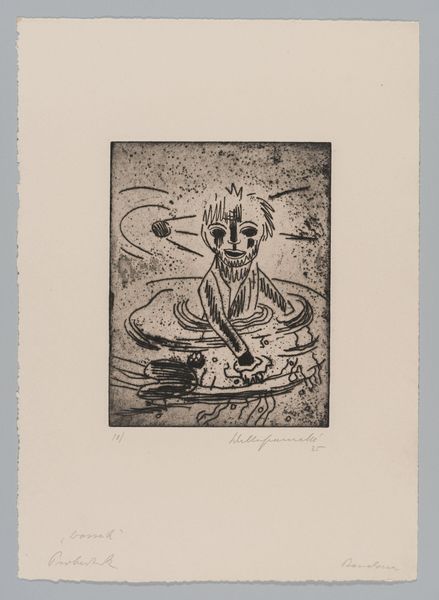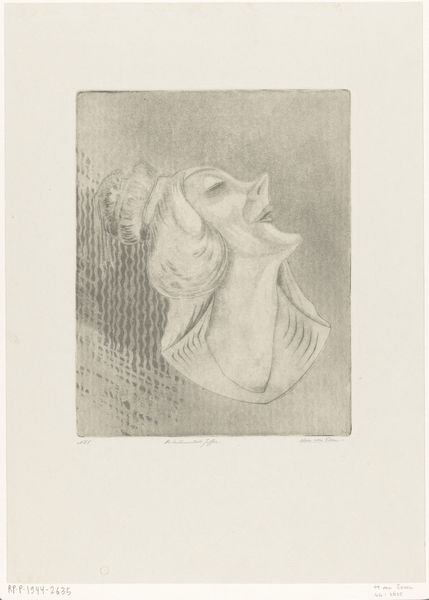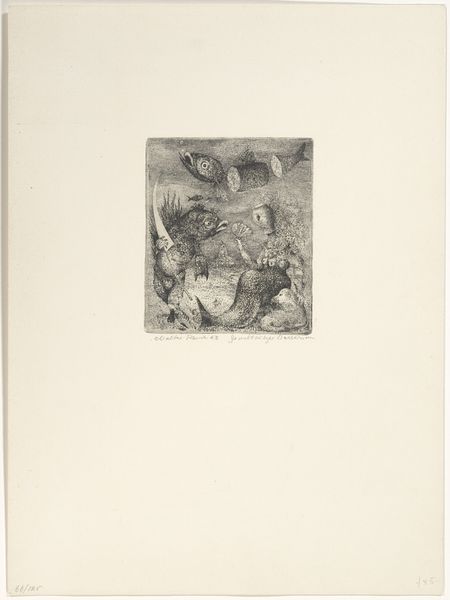
Dimensions: 175 mm (height) x 119 mm (width) (plademål)
Editor: Here we have Caroline Amelia Powell's "A Gorilla Abducting a Woman", an etching and engraving from 1890. It has quite a dramatic feel – very reminiscent of theatrical Romanticism. What can you tell us about it? Curator: What strikes me is how this print engages with deeply embedded anxieties about the "primitive" versus "civilized." The gorilla, a symbol often associated with untamed nature and base instinct, juxtaposed with the vulnerable female figure – what narratives do you think the artist sought to tap into? Editor: Maybe fears surrounding colonial encounters, or even anxieties regarding the subjugation and ownership of women? Curator: Precisely. This imagery also connects with classical mythology, the theme of abduction being prevalent in antiquity. Think of the Rape of Europa. But here, the symbolism is heavily loaded with the then-current scientific theories and colonialist ideologies. What emotions does the gorilla’s expression evoke? Is it rage, triumph, despair? Editor: I see a complex mix of those, it's not one clear thing. It reflects how society's image of nature is also very loaded and constructed rather than a straightforward concept. Curator: Absolutely. Images such as this reveal how our understanding of ourselves, of “humanity,” is often constructed in relation to what we define as "other." Editor: I had never really thought about how such prints actively shaped that kind of discourse at the time. That's fascinating. Curator: Visual language like this truly reveals so much about our shared, yet often unexamined, cultural beliefs and biases, wouldn’t you agree?
Comments
No comments
Be the first to comment and join the conversation on the ultimate creative platform.
